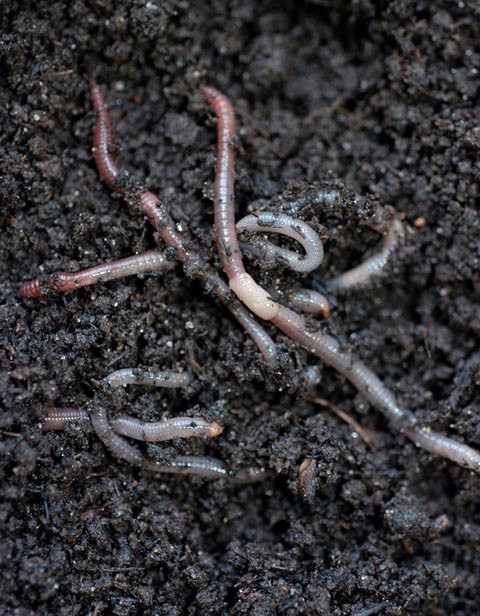
When Colgate University biologist Tim McCay began studying the impact of acid rain on soils and forest-dwelling animals in the Adirondacks, he started by heading into the forest and counting all of the species he could find. Much to his surprise, he didn’t find any worms. When he conducted the survey again and still found no worms, he asked other scientists who’d studied the region’s fauna, and they all reported similar results.
McCay eventually found two worm species in the Adirondack forest, but the overall dearth of worms had him wondering about the situation, especially in light of the fact that worms seemed to be thriving in other parts of New York state.
In a research study published this summer in the scientific journal Northeastern Naturalist, McCay and colleagues compared worm abundance in several forest plots in the Adirondacks with similar plots in central New York. They found more than five times as many worm species and 15 times as many individual worms per square meter in the central New York sites as in the Adirondack sites.
The researchers suggest that these differences may be due to soil chemistry disparities or differences in human settlement and land use. They believe that the soil qualities in central New York may enable it to neutralize acid rain and make it hospitable for worm survival.
“In areas where there is limestone bedrock, soils tend to be well buffered from acidic deposition,” McCay said. “Those soil communities aren’t affected because the limestone neutralizes the acid. That’s not the case in most places in the Adirondacks, where bedrock has fewer calcium-containing minerals. Adirondack soils are not well buffered against acid inputs.”
When McCay added crushed limestone to Adirondack soils in a laboratory experiment, the worms survived quite well. But it raises the question of whether less acidic precipitation, and the potential for expansion of worms into the Adirondack forest ecosystem, would be beneficial or not.
“If rain quality continues to improve, we should eventually start to see improvement in soil quality,” McCay explained. “These improvements might be sufficient to allow other species of worms to tolerate forest conditions in the Adirondacks and allow the species already there to grow faster and become more abundant. If that happens, it may change the conditions of Adirondack forests. It would certainly cause a more dynamic turnover of forest floor organic matter. And that could affect forest floor animals like snails and beetles in ways that are hard to predict.”
The prevailing notion among biologists is that most earthworm species that people are familiar with, including most of the species you see when it rains, are exotic to North America. Native worms were pushed southward by the advance of the glaciers and have been slow to move northward again. European species moved into the void after being introduced to North America in ship ballast, in plants brought from Europe, and in discarded fishing bait. McCay’s study may shed additional light on the distribution of earthworms we see today.

